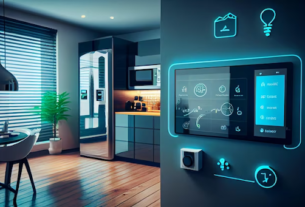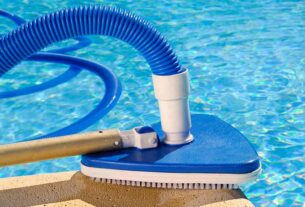In the fast-paced world of business, maintaining a clean and spotless environment is crucial for enhancing productivity, projecting professionalism, and ensuring a positive impression on clients and employees alike. However, achieving efficient commercial cleaning results can be quite challenging without expert knowledge and techniques. In this article, we will delve into the realm of efficient commercial cleaning by companies such as BPS Office Cleaning, to provide you with invaluable tips and time-tested techniques that will leave your workplace gleaming from top to bottom. Join us as we explore best practices in everything from surface preparation to selecting the right cleaning products, enabling you to achieve remarkable cleanliness standards effortlessly. Whether you own a small office space or manage a sprawling corporate facility, the expert insights shared here are bound to revolutionize your approach towards commercial cleaning by maximizing efficiency while delivering impeccable results every single time.
Choosing the Right Cleaning Products and Equipment
To achieve spotless results in commercial cleaning, it is crucial to choose the right cleaning products and equipment. Here are some expert tips to help you make the best choices:
- Consider the specific needs: Evaluate your cleaning requirements before selecting products or equipment. Different surfaces and materials may require different cleaning solutions. For example, carpets may need a specialized carpet cleaner while glass surfaces might require a streak-free window cleaner.
- Go for quality: Investing in high-quality cleaning products can lead to more efficient and effective results. Cheaper alternatives may not provide the same level of cleanliness or durability, which can end up costing you more in the long run.
- Prioritize safety: Ensure that the chosen cleaning products are safe for both your staff and customers by checking for appropriate labels like “non-toxic” or “eco-friendly.” Additionally, consider any potential allergens that could negatively impact individuals within your commercial space.
- Maintain equipment regularly: Regular maintenance of cleaning equipment extends its lifespan and ensures optimal performance. Clean brushes, replace worn-out parts, and properly store them when not in use to prevent damage.
By carefully considering your needs, investing in quality products, prioritizing safety, and maintaining equipment regularly, you can achieve spotless results in commercial cleaning efficiently.
Streamlining Cleaning Processes for Maximum Efficiency
Tips for Streamlining Cleaning Processes
- Prioritize tasks: Start by identifying the most important cleaning tasks that need to be completed. Focus on these first before moving on to less critical jobs.
- Organize supplies and equipment: Keep all cleaning supplies and equipment in one easily accessible location. This will save time searching for items when they are needed.
- Establish efficient workflows: Develop a systematic approach to cleaning, going from one area or room to the next in a logical order. This eliminates unnecessary backtracking and maximizes efficiency.
Techniques for Maximum Efficiency
- Use the right tools: Invest in high-quality cleaning tools that are specifically designed for commercial use. These can make tasks easier and more effective, reducing overall cleaning time.
- Implement time-saving methods: Look for opportunities to streamline repetitive processes, such as using microfiber cloths instead of traditional rags or mops which require constant wringing out.
- Train staff effectively: Properly train employees on the most efficient techniques for each specific task. This ensures consistency and allows them to work quickly while still achieving spotless results.
By following these tips and techniques, businesses can streamline their cleaning processes, saving valuable time and resources while still maintaining a clean and sanitary environment.
Techniques for Deep Cleaning and Stain Removal
Advanced Techniques for Deep Cleaning and Stain Removal
- Hot water extraction: This method involves using hot water and a specialized cleaning solution to remove deep-seated dirt from carpets and upholstery. A powerful machine is used to inject hot water into the fabric, breaking down dirt particles, which are then extracted along with the water.
- Steam cleaning: Similar to hot water extraction, steam cleaning uses high-temperature steam to loosen stains and dirt from surfaces. The steam penetrates deep into fibers or pores, dissolving grime that can be easily wiped away.
- Enzyme-based cleaners: These cleaners contain enzymes that break down organic materials such as food stains or pet accidents. By actively digesting the stain-causing molecules on a molecular level, enzyme-based cleaners effectively eliminate odors while removing stubborn stains.
- Oxygen bleach: Unlike chlorine bleach, oxygen bleach is environmentally friendly while still being highly effective at removing tough stains like coffee or red wine spills. It works by releasing oxygen ions in contact with water, lifting staining agents off surfaces without bleaching color.
- Pile lifting technique: To ensure thorough carpet cleaning, an expert technique called pile lifting can be employed using a professional-grade vacuum cleaner equipped with rotating brushes. This method helps restore the carpet’s original texture by repositioning crushed carpet fibers.
Creating a Cleaning Schedule and Checklist for Consistent Results
A cleaning schedule is crucial to maintain cleanliness and organization in commercial spaces. It helps ensure that all areas are regularly cleaned, preventing dirt buildup and ensuring consistent results. Here are some tips on creating an effective cleaning schedule:
- Assess the facility: Before creating your cleaning schedule, conduct a thorough assessment of the facility to identify high-traffic areas, frequently used items, and specific cleaning needs.
- Prioritize tasks: Determine the essential tasks that need to be completed daily, weekly, or monthly based on their importance and frequency of use.
- Delegate responsibilities: Assign specific tasks to team members according to their strengths and expertise.
Once you have established a cleaning schedule, it’s important to create a checklist that outlines each task required for consistent results. Use concise language when writing your checklist so cleaners can easily understand what needs to be done:
- Empty trash bins in all common areas
- Dust surfaces throughout the premises
- Vacuum carpets and mop hard floors
- Clean windows inside-out
- Disinfect restrooms thoroughly




